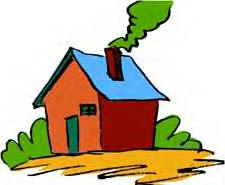Definition:
* Rash on one small part of the body (localized or clustered)
* Red or pink rash
* Small spots, large spots, or solid red
* Includes localized areas of redness or skin irritation
Causes:
Main Cause: Skin contact with some irritant
Return to School
* Children with localized rashes do not need to miss any child care or school.
 Call 911 Now (Your Child May Need an Ambulance) If:
Call 911 Now (Your Child May Need an Ambulance) If:
Not moving or too weak to stand
Call Your Doctor Now (or in Alberta, Canada call 780-408-LINK)) If:
* Your child looks or acts very sick
* Purple or blood-colored spots or dots that are not from injury or friction
* Bright red area or red streak (but not sunburn)
* Rash area is very painful
* Child is younger than 1 month and tiny water blisters (like chickenpox)
Call Your Doctor Within 24 Hours (Between 9:00 am and 4:00 pm) If:
* You think your child needs to be seen
* Severe itching or fever is present
* Looks like a boil, infected sore, or other infected rash
* Teenager with genital area rash
* Lyme disease suspected (bull’s-eye rash, tick bite or exposure)
Call Your Doctor During Weekday Office Hours If:
* You have other questions or concerns
* Blisters unexplained (EXCEPTION: poison ivy)
* Pimples (apply antibiotic ointment until seen)
• Peeling Fingers
* Rash lasts longer than 7 days
Parent Care at Home If: Mild localized rash and you don’t think your child needs to be seen
 Home Care advice for localized rashes:
Home Care advice for localized rashes:
1. Reassurance: New localized rashes are usually caused by skin contact with an irritating substance.
2. Avoid the Cause
* Try to find the cause
* Consider irritants like a plant (eg, poison ivy), chemicals (eg, solvents, insecticides), fiberglass, detergents, a new cosmetic, or new jewelry (eg, nickel).
* A pet may be the intermediary (eg, with poison ivy or oak) or your child may react directly to pet saliva.
3. Avoid Soap: Wash the area once thoroughly with soap to remove any remaining irritants. Thereafter avoid soaps to this area. Cleanse the area when needed with warm water.
4. Local Cold: Apply a cold, wet washcloth or soak in cold water for 20 minutes every 3 to 4 hours to reduce itching or pain.
5. Steroid Cream: If the itch is more than mild, apply 0.5% hydrocortisone cream (no prescription needed) 4 times per day (EXCEPTION: suspected ringworm).
6. Avoid Scratching: Encourage your child not to scratch. Cut the fingernails short.
7. Contagiousness: Children with localized rashes do not need to miss any child care or school.
8. Expected Course: Most of these rashes pass in 2 to 3 days.
9. Call Your Doctor If:
* Rash spreads or becomes worse
* Rash lasts more than 1 week
* Your child becomes worse
Based on recommendations/advice in “My Child is Sick; Expert Advice for Managing Common Illnesses and Injuries”, 14th Edition, by Barton D. Schmitt
